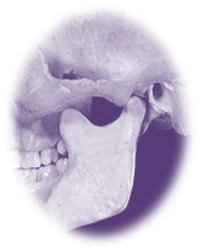Chewing gum is a unique ‘food’ with relatively low calories that is chewed within a certain period of time (usually around 20 minutes). Reading the product’s label is important in identifying the types and content of the chewing gum that are beneficial to oral health.
Types of Chewing Gum:
- With sugar – such as sucrose
- Without sugar or sugar free (with artificial sweetener such as sorbitol and xylitol)
Chewing gum with sugar contributes to acid formation which causes tooth decay (dental caries).Clinical studies have shown that there is an increasing trend in dental caries amongst individuals who use chewing gum with sugar as compared to the control group who did not use chewing gum.
Chewing gum with artificial sweetener in general cannot be digested by the bacteria in the mouth. It does not cause dental caries. Based on the short term experiment, it helps to contribute to remineralisation of tooth enamel. Anti-caries effect via saliva stimulation was also observed. Clinical studies have demonstrated that xylitol has better anti caries effect compared to sorbitol.
The Role of Chewing Gum
Chewing gum comes in various flavours in the market. The flavour stimulates saliva formation up to ten times. Saliva helps to clean food particles in the mouth. Bicarbonate level in stimulated saliva is higher compared to resting saliva (when there is no chewing action). Bicarbonate neutralizes acid formed by the bacteria in the dental plaque. Therefore, sugar free chewing gum helps to prevent early dental caries from becoming more serious.
Chewing gum has been proven to :
- Stimulate saliva formation
- Neutralize dental plaque acid
- Stimulate tooth enamel remineralization
- Help to prevent dental caries formation
The most suitable time to use chewing gum is after meals and after taking snacks (especially the sugary type) and is chewed for at least 20 minutes. Chewing gum helps to increase saliva formation thus returning the saliva pH level to normal.
Patients taking medication such as antidepressants, beta-blockers or patients with Sjogren Sydrome (who receive radiotherapy at the head and neck region) will experience the side effect of dry mouth (xerostomia). Chewing gum may helps in relieving discomfort due to dry mouth by stimulating more saliva from the remaining salivary glands/tissues that is not functioning. With good oral hygiene technique, it improves the mouth condition and reduces the risks of dental caries.
Interesting Facts About Chewing Gum
- The British Dental Association encourages the use of sugar free chewing gum as part of routine oral hygiene to protect tooth decay.
- It is not harmful when swallowed because it is generally made of roughage. Caution: Please be careful when chewing so that you don’t choke on it or inhale it accidentally because it can be dangerous (it might enter your breathing tract). If you notice the situation, please make an emergency call and seek for immediate help. Chewing gum should only be given to 6 year old children and above. Avoid using it during active sport.
-
It does not cause temporomandibular joint disorder or TMD (Diagram 1). However it might happen when the patient already has TMD. Please get professional advice from your nearest dentist regarding TMD problem.


Diagram 1: Location of temporomandibular joint
- It assists smoker to stop the smoking habit. The Chewing action itself can distract smokers from their habits without any negative effects on food intake and can also act as nicotine replacement therapy.
- It stimulates and increases the blood flow as well as bio-electric activity in certain parts of the brain. It occurs when an individual feel calm or relaxed or when stress level is reduced.
Please note that used chewing gum should be wrapped and thrown into the dustbin for environmental cleanliness. Do choose sugar free chewing gum for better benefits – as mentioned earlier.
References:
- Edgar M. A review of the positive effects of chewing sugarfree gum on oral health. University of Liverpool.http://www.betteroralhealth.info/orbit_us/media-area/articles/a-review-of-the-positive-effects-of-chewing-sugarfree-gum-on-oral-health/index.htm
- Edgar WM. Sugar substitutes, chewing gum and dental caries–a review. Br Dent J. 1998 Jan 10;184(1):26.
- Elizabeth G. The role of sugarfree gum from dry mouth relief and tooth decay prevention. http://www.betteroralhealth.info/?id=276&M=3
- Makinen KK, Bennett CA, Hujoel PP, Isokangas PJ, Isotupa KP, Pape HR & Makinen PJ (1995) Xylitol chewing gums and caries rates: a 40-month cohort study. J Dent Res 74(12): 1904-13 Manning RH & Edgar WM.
- Salivary stimulation by chewing gum and its role in the remineralization of caries-like lesions in human enamel in situ. J Clin Dent. 1992;3(3):71-4.
- Moira C. Sugarfree gum: its role from the prevention of caries http://www.betteroralhealth.info/orbit_us/media-area/articles/sugarfree-gum-its-role-in-the-prevention-of-caries/index.htm
- Simon M R. A practical guide on talking to patients about sugarfree gumDentistry magazine, UK http://betteroralhealth.info/orbit_us/media-area/articles/a-practical-guide-on-talking-to-patients-about-sugarfree-gum/index.htm Szoke J, Banoczy J & Prodkin HM (2001) Effect of after-meal sucrose-free gum chewing on clinical caries. J Dent Res 80(8): 1725-1729
- Szoke J, Banoczy J & Proskin HM (2001). Effect of after-meal sucrose-free gum-chewing on clinical caries. J Dent Res 80(8): 1725-1729 Yankell SL & Emling RC (1997) J Clin Dent 8: 169-172
| Last Reviewed | : | 23 August 2019 |
| Writer | : | Dr. Mustaffa b. Jaafar |
| Accreditor | : | Dr. Faizah bt. Kamaruddin |
| Reviewer | : | Dr. Sharol Lail b. Sujak |







